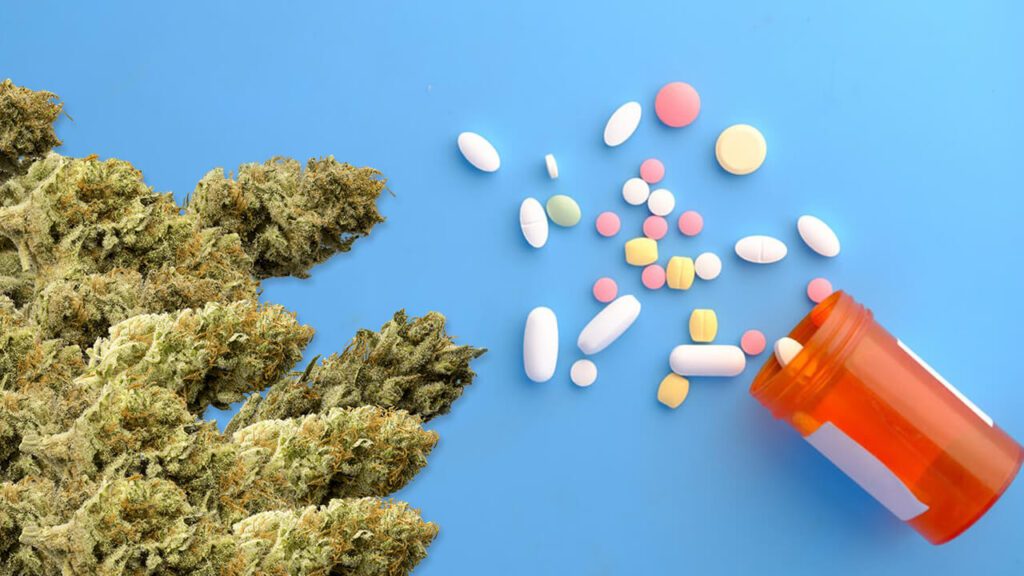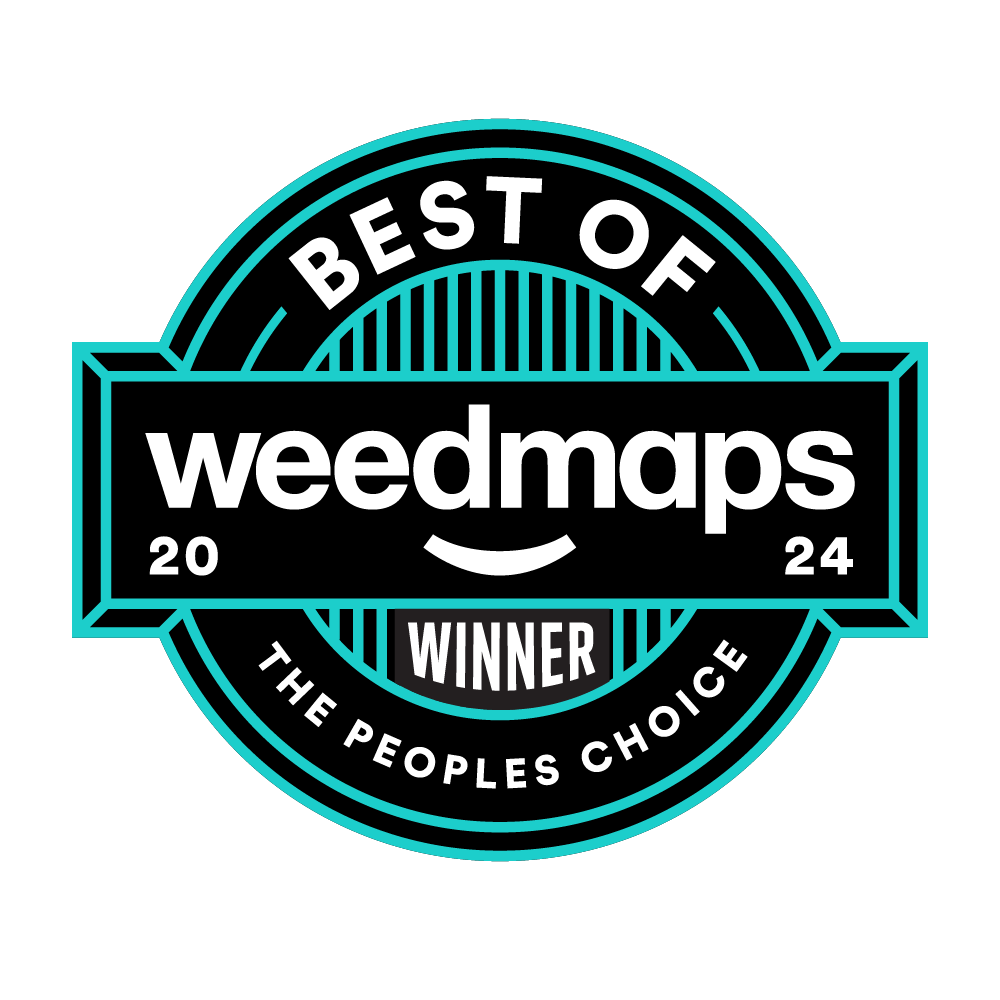Safety and Addiction
| Cannabis | Opioids | |
| Addicting | Yes In 2016 1.5% of the population reported marijuana use disorder | Yes 10.1 million Americans (3.7%) misused opioids at least once in a 12-month period |
| Emergency Treatment Available | No | Yes |
| Over Dose Death Rate (2020) | 0 | 68,630 (2020) 2 out of 3 drug overdoses in 2019 involved an opioid |
| Fatal Over Dose possible | Possibly, but not likely. A 2014 report estimated that the lethal half dose (LD50) for THC in humans is about 30mg/kg. For example, approximately 2 grams of pure THC has a 50% chance of killing a 150-pound person. | Yes |
| Over Dose signs | A person can ingest too much marijuana. However, typically, it will not result in permanent disability or death. Signs of consuming too much marijuana may be: Pupil dilationNausea /vomitingParanoiaFast heart rate (for up to 6 hours after use)Feeling coldAnxietyShortness of breath | Awake, but unable to talkBody is limpFace is very pale or clammyFingernails and lips turn blue or purplish blackFor lighter skinned people, the skin tone turns bluish purple, for darker skinned people, it turns grayish or ashen.Breathing is very slow and shallow, erratic, or has stoppedPulse (heartbeat) is slow, erratic, or not there at allChoking sounds, or a snore-like gurgling noise (sometimes called the “death rattle”)VomitingLoss of consciousnessUnresponsive to outside stimulus |
| Receptors involved | Endocannabinoid system (CB1 & CB2 receptors) | Opioid Receptors (mu, delta, Kappa) |
| Where are receptors located | CB1: Brain & CNS CB2: other organs | Nerve cells in brain, spinal cord, GI tract |
| Withdrawal Symptoms | SleeplessnessAltered perceptionsAnxietyDecreased appetiteCravingsIrritability | Early symptoms of withdrawal include: Agitation/ Irritability AnxietyChange in appetite Muscle achesIncreased tearingInsomniaRunny nose or CongestionSweatingYawning Late symptoms of withdrawal include: Abdominal crampingDiarrheaDilated pupilsGoose bumpsNauseaVomiting |
| Treatment for Addiction: | Behavioral Therapy (Cognitive Behavior Therapy, Contingency Management or Motivational enhancement Therapy) *There are no current medications indicated for the treatment of marijuana use disorder SAMHSA’s National Helpline, 1-800-662-HELP (4357) Substance Abuse and Mental Health Services Administration | Opioid dependence is a complex health condition that often requires long-term treatment and care. The main objectives of treating and rehabilitating persons with opioid dependence are to: reduce dependence on illicit drugsreduce the morbidity and mortality caused by the use of illicit opioids, or associated with their use, such as infectious diseasesimprove physical and psychological health reduce criminal behaviorfacilitate reintegration into the workforce and education system improve social functioning. Medications can be used to treat withdrawal symptoms Narcotics Anonymous: www.na.org SMART Recovery: www.SMARTRecovery.org |
| How to treat an overdose: | If a marijuana overdose required medical attention, the patient may receive the following to treat symptoms: Anti-anxiety medicationIV fluidsMedication to control heart rate and blood pressure Patients who consume too much marijuana will not always need medical attention. The effects may disappear or lesson within a few hours. | Treatment involves supportive care and medications. The most commonly used medication, clonidine, primarily reduces anxiety, agitation, muscle aches, sweating, runny nose, and cramping. Medications may be needed to treat vomiting and diarrhea. Naloxone, Nalmefene, or naltrexone given for CNS or respiratory depression |
Studies:
Cannabis and Opioids
“The evidence summarized in this article demonstrates the potential cannabis has to ease opioid withdrawal symptoms, reduce opioid consumption, ameliorate opioid cravings, prevent opioid relapse, improve OUD treatment retention, and reduce overdose deaths.”
“The state of New Jersey recently added OUD to their list of qualifying conditions for participation in the state’s medical cannabis program.”
https://www.liebertpub.com/doi/full/10.1089/can.2018.0022
“More than 16,000 Americans die each year from prescription opioid overdose, and accidental drug poisoning has surpassed automobile collisions as the leading cause of accidental death in the U.S., driven largely by prescription opioids.”
“When used in conjunction with opiates, cannabinoids lead to a greater cumulative relief of pain, resulting in a reduction in the use of opiates (and associated side-effects) by patients in a clinical setting. Additionally, cannabinoids can prevent the development of tolerance to and withdrawal from opiates, and can even rekindle opiate analgesia after a prior dosage has become ineffective.”
http://www.tandfonline.com/doi/full/10.1080/02791072.2012.684624#abstract
“Research shows that cannabinoids also produce an entourage effect that enhances the effectiveness of opiate painkillers. One animal study found morphine was 15 times more active with the addition of a small dose of THC. Codeine was enhanced on the order of 900-fold. Human and animal studies have repeatedly shown that cannabinoids work synergistically with opioid drugs in relieving neuropathic pain. Researchers suggest that direct and indirect interactions between opioid and cannabinoid receptors not only enhance analgesia but also reduce the development of tolerance to opiates.”
http://www.safeaccessnow.org/medical_cannabis_research_what_does_the_evidence_say
Side Effects
| Hydrocodone (Vicodin) | Oxycodone (Oxycontin) | Cannabis |
| dizziness | Confusion | Reddening of the eyes |
| drowsiness | Dizziness | Dry mouth |
| confusion | Drowsiness | Increased heart rate |
| Hypersensitivity Reaction (Hives, swelling/edema, anaphylaxis) | Hypersensitivity Reaction (Hives, swelling/edema, anaphylaxis | Anxiety |
| Decreased respiratory/ difficulty breathing | Hallucinations | paranoia |
| Constipation | Slowed breathing | |
| Slowed heart rate | Constipation | |
| Nausea / vomiting | Smaller pupils | |
| Nausea/ vomiting | ||
| Seizures | ||
| Fast or slow heart rate |
Endocannabinoid System and Opioid System:
The Endocannabinoid Systems is involved in a variety of physiological processes including appetite, pain-sensation, mood, and memory.
Endocannabinoids are the substances that our body makes naturally to stimulate cannabinoid receptors.
Phytocannabinoids are plant substances that stimulate cannabinoid receptors
THC & CBD are phytocannabinoids
Cannabinoid receptors are activated by cannabinoids, generated naturally inside the body (endocannabinoids) or introduced into the body as cannabis or a related synthetic compound.
There are 2 known subtypes of cannabinoid receptors:
CB1: mainly in the brain (central nervous system), also in the connective tissue, glands, lungs, liver and kidneys
Thought to be one of the most widely expressed G protein-coupled receptors in the brain.
CB2: mainly in the immune system and in hematopoietic cells.
- expressed on T cells of the immune system, on macrophages and B cells, and in hematopoietic cells.
- They have a function in keratinocytes.
- They are expressed on peripheral nerve terminals.
- Play a role in antinociception, or the relief of pain.
The opioid system controls pain, reward and addictive behaviors.
Opioids exert their pharmacological actions through three opioid receptors:
- mu
- delta
- kappa
Opioids act by attaching to specific proteins called opioid receptors, which are found in the brain, spinal cord, gastrointestinal tract, and other organs in the body. When these drugs attach to their receptors, they reduce the perception of pain.
The body cannot produce enough natural opioids to stop severe or chronic pain nor can it produce enough to cause an overdose.
There are few cannabinoid receptors in the brainstem, so unlike narcotics, cannabis does not impact breathing and heart function.

Medical Cannabis Products to Help With Opiates
The Kind Goods has many different forms of medical cannabis products that can be used to help with Opiate Withdrawals.






